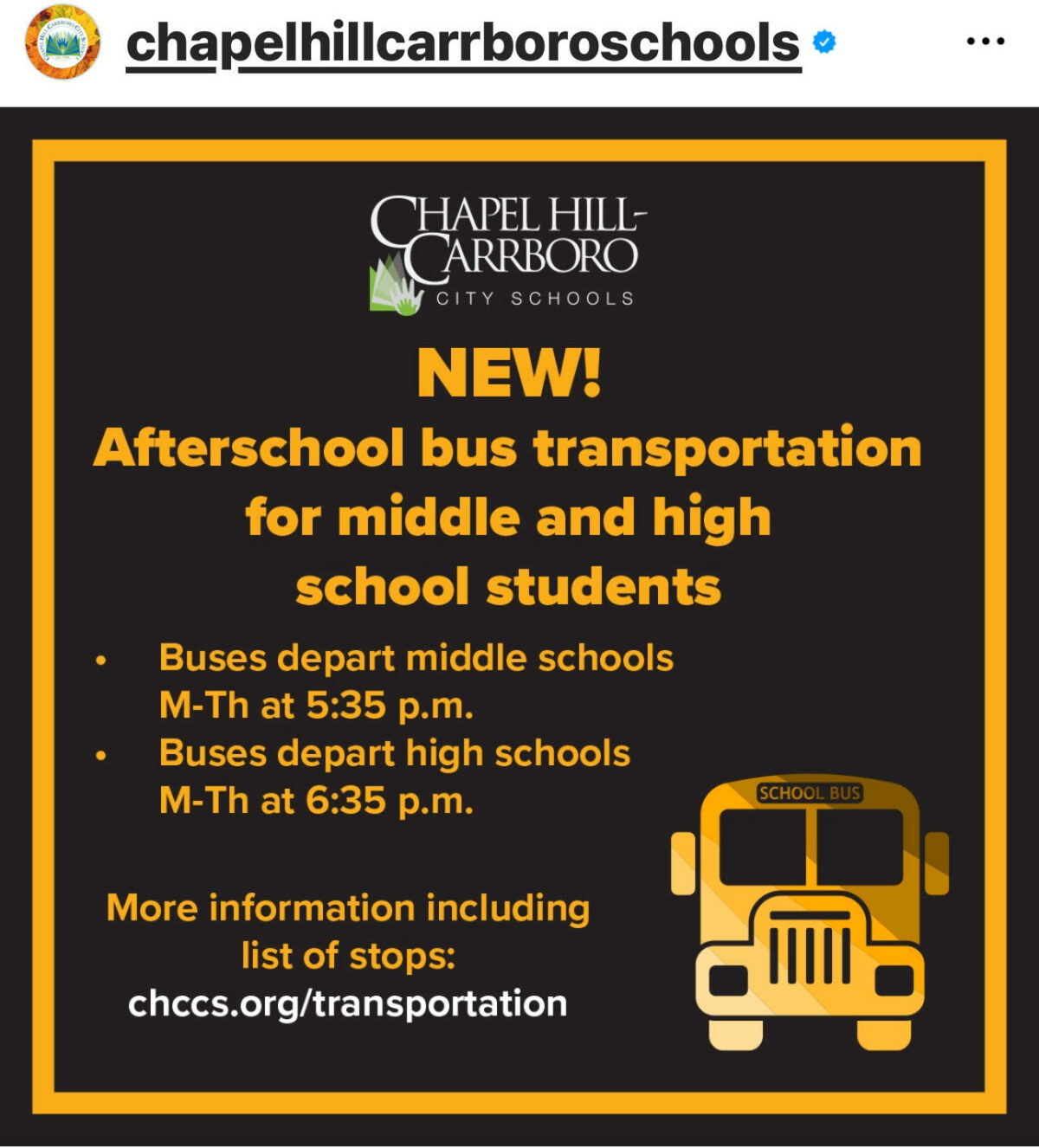Last month, the Chapel Hill-Carrboro City Schools announced that it was adding afterschool/evening bus transportation from every middle and high school into Chapel Hill and Carrboro neighborhoods. The idea was to make it easier for kids who participate in afterschool sports, clubs, arts, and activities to get home.
We think this idea is awesome and very innovative. The lack of afterschool bus service made it difficult for kids to participate in afterschool activities if they relied on the bus.
Here’s how it works:
All routes run Monday through Thursday. One bus per school will leave each middle school promptly at 5:35 p.m. and each high school at 6:35 p.m. (Students must have a bus pass.) The stops are more centrally located – so students may need to walk a bit further to reach their homes. You can see all of the bus stops and locations on the CHCCS website.
We were really impressed with this initiative, and reached out to Andy Jenks, the Chief Communications Officer for CHCCS to learn more.
Andy, this is super cool. How did the school district come up with the idea for after school and evening bus transportation?
Like a lot of good ideas, it often begins with informal conversations in the community, such as chats among and between district leaders, Board members, transportation staff, school staff and our students’ families. All centered around a central question: What if we could make extracurricular activities just a little more accessible to all students? As ideas began to crystallize, then our Board and district leaders had more formal talks about what this would look like, leading up to the launch this month.
Who will it serve? Will more students be able to participate in after school activities?
This is designed for middle and high school students, each of whom would be able to catch a bus at or about the time that many extracurricular activities (such as a club meeting, a practice, a rehearsal, etc.) conclude on a given evening. The buses don’t go “door to door” but they are routed into various neighborhoods, and for some students and families that might mean the difference between being able to regularly participate in certain extracurriculars or not.
How will you measure its effectiveness?
We’ll track the ridership numbers, which we expect to be low at this early stage, and then increase as word begins to catch on. Also, we’ll keep an eye on the routes/stops that we’ve designed, and if there are better, or more efficient routes based on the specific students who are accessing the service, then we’ll make adjustments. After a while, we’ll also solicit feedback from club and activity leaders to see if the service made a significant difference (i.e. increase) in participation. This would, of course, vary from one season to the next as different students participate in different clubs, sports, activities, etc.
Are there any other changes or opportunities you’re thinking about concerning school transportation?
Nothing specific at this time, though it’s fair to say we’re always open to new ideas, and we’re routinely evaluating our performance to be sure we’re doing the best we can for our students and families.

